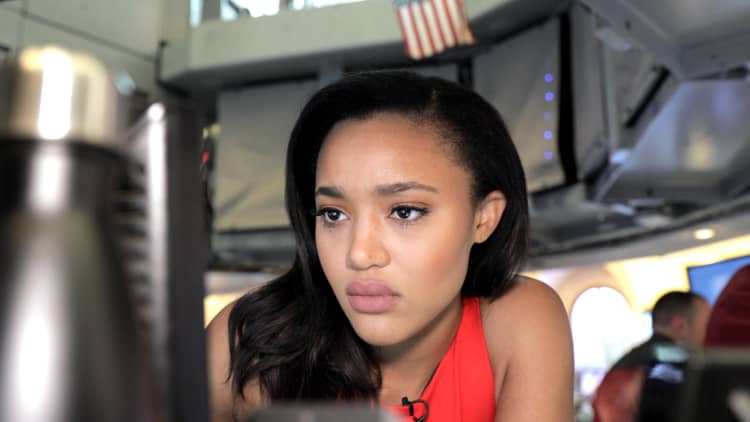The 2019 FIFA Women's World Cup kicked off on June 7th with a victory by host country France over South Korea.
For the next month, 552 players representing 24 countries will compete to be named World Cup champions and for prize money — more than ever before. In October 2018, FIFA president Gianni Infantino announced that FIFA would raise the total prize money for the Women's World Cup from $15 million to $30 million. The champions will take home $4 million of those funds.
"It's a very important message for women's football. It will certainly boost this World Cup even more," said Infantino at a news conference.
But critics unimpressed, including global footballers' union FIFPRO.
"Despite these changes football remains even further from the goal of equality for all World Cup players regardless of gender," said FIFPRO in a statement. "In reality, the changes actually signify an increase in the gap between men's and women's prize money. This regressive trend appears to contravene FIFA's statutory commitment to gender equality."
During the 2018 FIFA Men's World Cup in Russia, 32 teams competed for $400 million in prize money. The champions, France, took home $38 million — more than all 24 women's teams will compete for in 2019. This year, the women's teams will split 7.5% of the total prize money that the men enjoy.
The prize money totals for both the Men's and the Women's World Cup have increased significantly over the past several decades, but the acceleration in pay for both men and women players reflects a widening gender pay gap.
According to FIFA, the 2007 Women's World Cup in China was the first year a women's team took home prize money. Germany took home $1 million, $18.56 million less than what the Italian men's team won in the 2006 Men's World Cup in Germany. At the following Men's Word Cup in 2010, winning team Spain took home $30 million, while the prize money for the 2011 Women's World Cup in Germany remained $1 million.
Over the next two Women's World Cups, the prize money for championship teams increased, but not enough to narrow the prize money gap — in 2014 the German men's team took home $35 million, but the following year the women's U.S. team took home $2 million, a $33 million gap.
This year, the prize money gap between men's and women's championship teams is $34 million.
Women's players around the world are taking action to address pay discrepancies at the World Cup and in their local leagues. In 2016, five U.S. women's players filed a discrimination complaint with the Equal Employment Opportunity Commission (EEOC) and in March, 28 members of the U.S. Women's National Soccer Team filed a lawsuit against the U.S. Soccer Federation for gender discrimination and unequal pay.
Since 2017, Norweigan Ballon d'Or winning striker Ada Hegerberg has been on strike, refusing to play for her national team until the women's and men's teams play under equal conditions. SBNation's James Dator calls Hegerberg "the best player in soccer."
Since October 2018, Australian footballer's union Professional Footballers Australia (PFA) has sent several letters to FIFA urging the organization to move towards pay equality. According to the PFA, even if the women's prize money pool continued to increased 100% each year, it would be 2039 before men's and women's prize money was equal.
Like this story? Subscribe to CNBC Make It on YouTube!
Don't miss:



